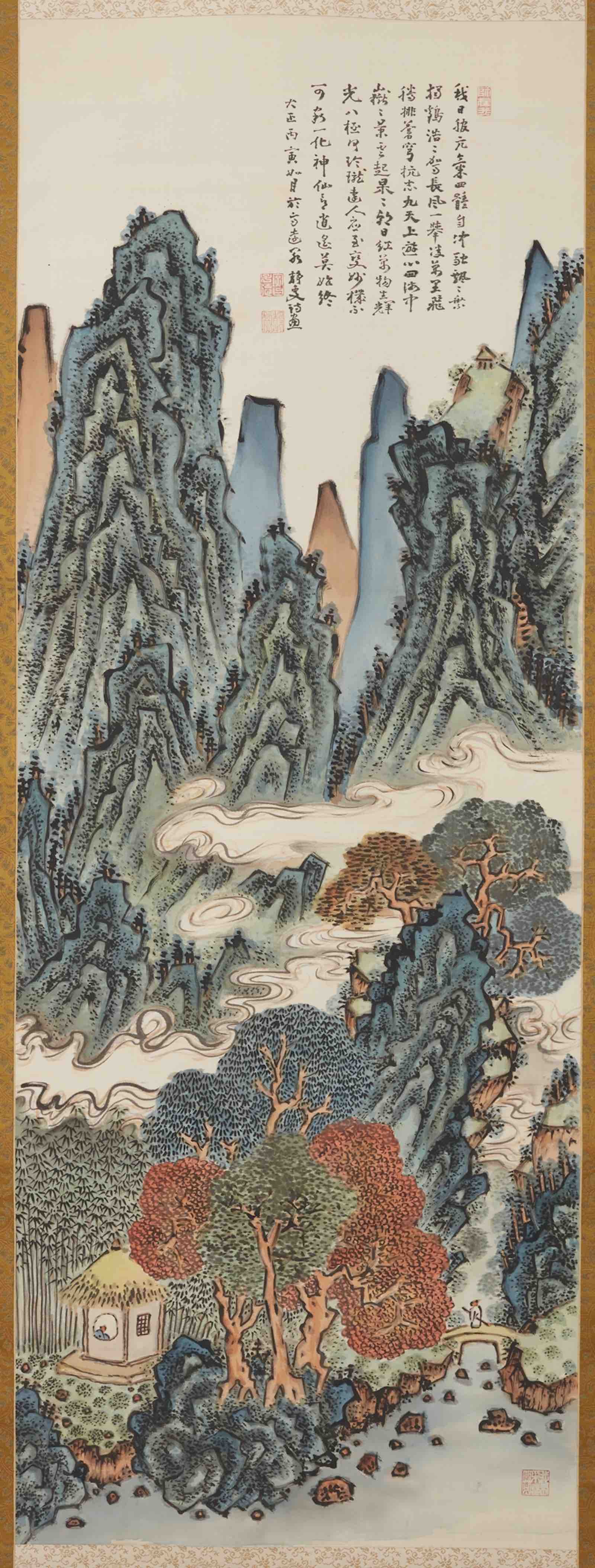Included in the exhibition are important works like One Thousand Mountains and Ten Thousand Streams, created in 1918. Kodōjin fills the work with rock formations painted in shades of orange and completes the composition with scenes of water and dense foliage. Accompanying the illustration are 11 poems, more than Kodōjin included in any other painting, that describe moments of solitude in nature and the companionship of a visiting guest. As the guest departs, Kodōjin’s final poem reflects, “My guest has left, the bramble gate is silent. My autumn heart touches season’s colors.”
Kodōjin creates a winter scene in 1928’s Withered Tree and Winter Crow. Demonstrating his mastery of abstraction, he leaves ample negative space and places only five tall, vertical peaks in the background, each painted with a wet brush in a different color: red, black, yellow, green, and blue. The withered tree mentioned in the title is positioned at the bottom edge of the painting, rendered in black with red spots, atop of which sits the almost indiscernible crow. Kodōjin celebrates the austerity of winter with a poem, writing “Clouds daily come and go…Ah! Reverie! Here is joy!”
At over six feet tall, Kodōjin’s 1914 summer scene Landscape after Mi Fu is his tallest landscape. Instead of paper or silk, this scene is depicted on satin, which Kodōjin used for only four percent of his works. Mountains rise from the bottom of the painting, and the scene culminates with a poem at the top that praises the bounty of summer, and his unity with it. Kodōjin exclaims “Streams are flowing, the very stones sing out.”




















